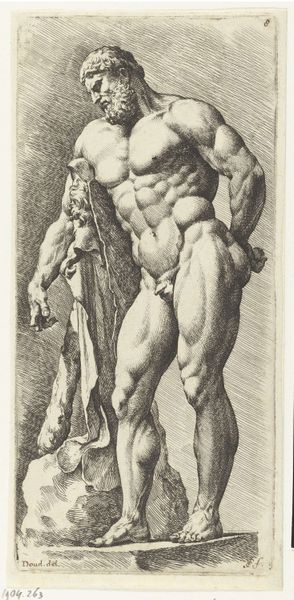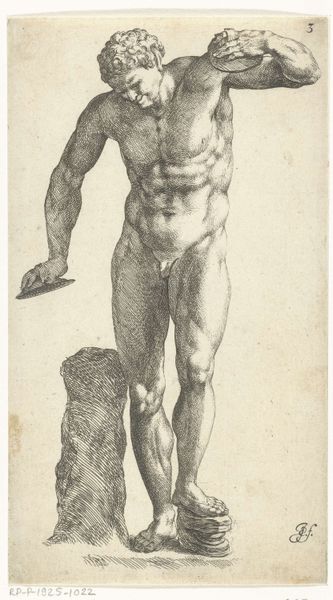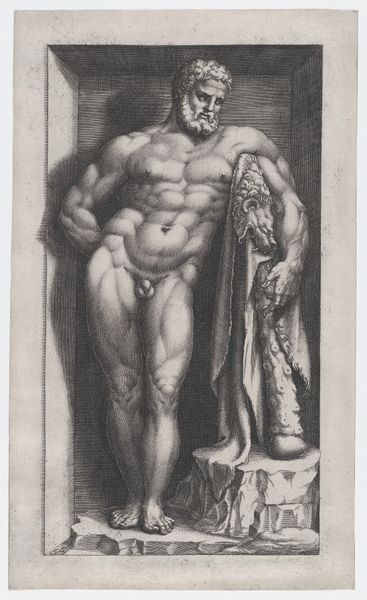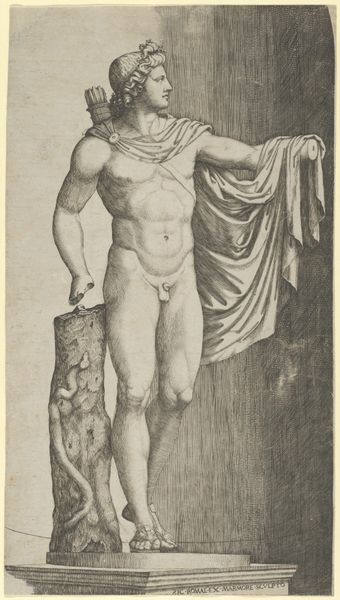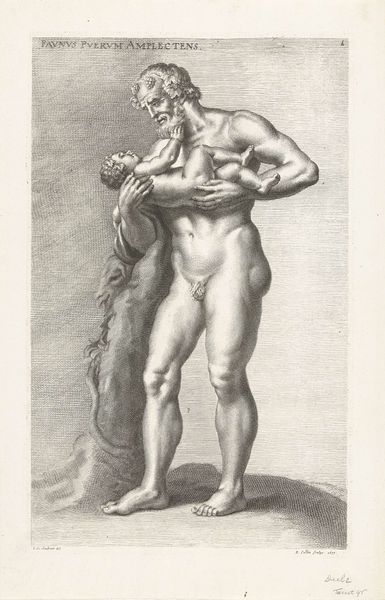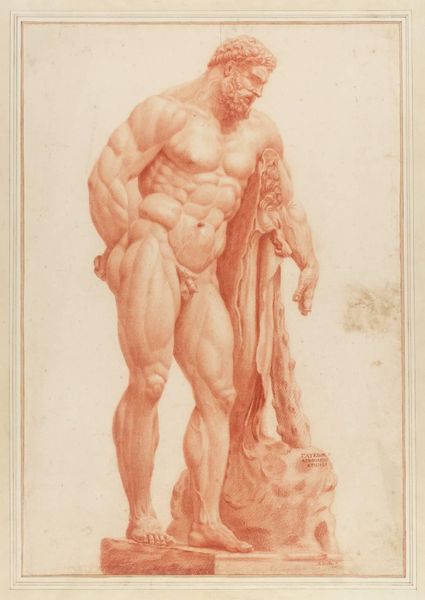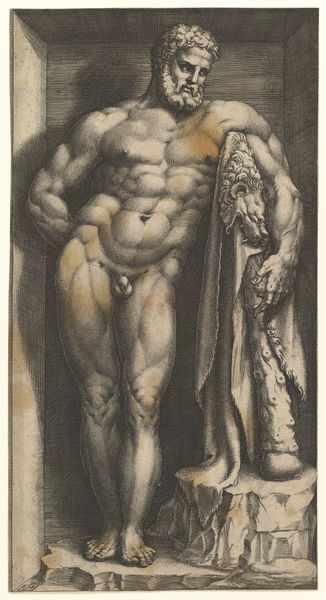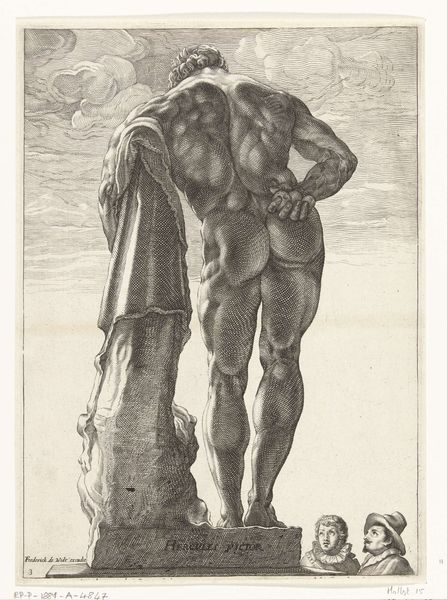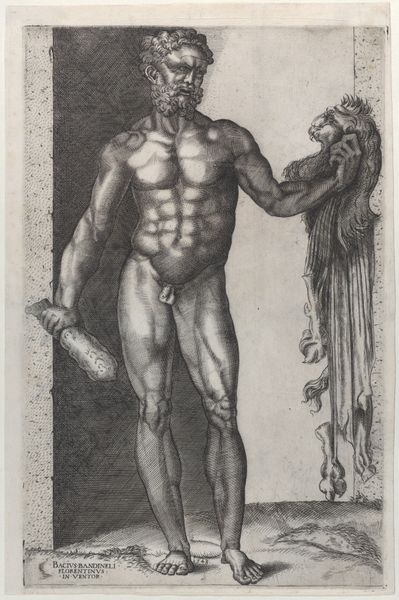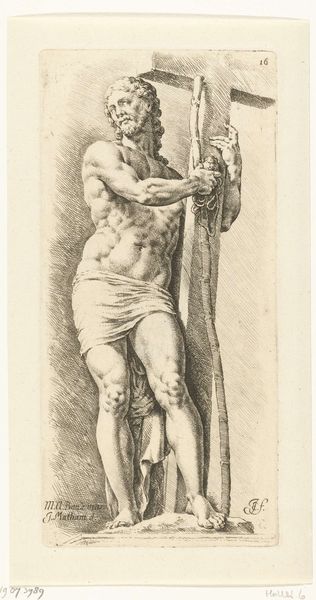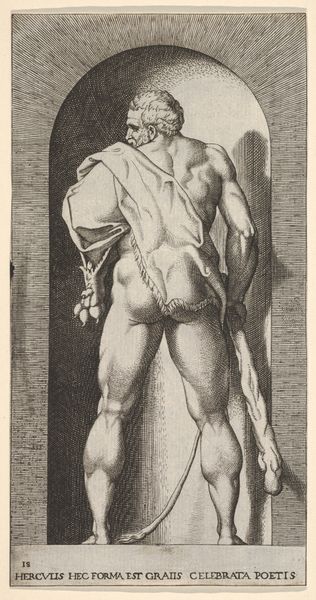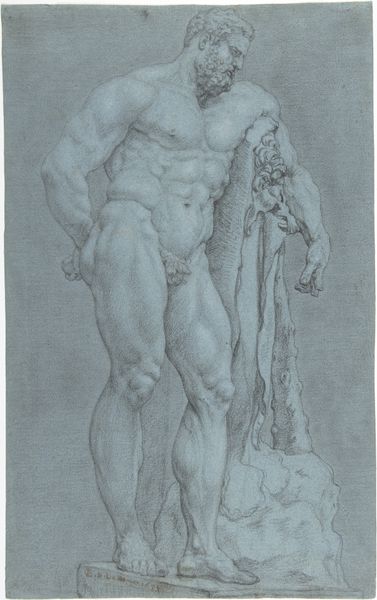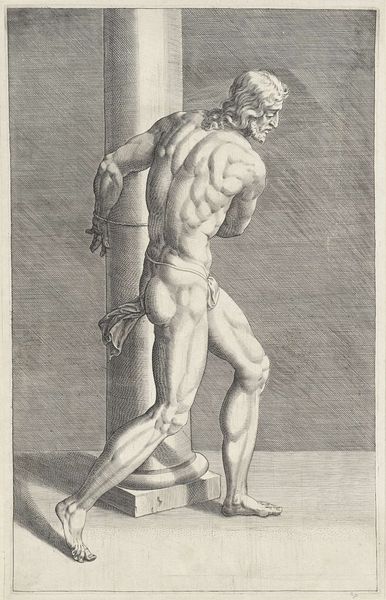
engraving
#
baroque
#
caricature
#
figuration
#
form
#
ancient-mediterranean
#
line
#
history-painting
#
nude
#
engraving
Dimensions: height 225 mm, width 105 mm
Copyright: Rijks Museum: Open Domain
Jan de Bisschop created this print of a standing Hercules in the Netherlands sometime in the mid-17th century. Hercules, the Roman equivalent of the Greek hero Heracles, was often depicted in art as a symbol of strength and virtue. In de Bisschop’s image, Hercules leans on a club, evoking classical sculptures. The print would have circulated among a sophisticated, educated elite that prized knowledge of classical stories and forms. In the Dutch Republic, art wasn't confined to the church or aristocracy like elsewhere in Europe. A burgeoning merchant class fueled a vibrant art market. Artists joined guilds, like de Bisschop, to navigate this new economy. Prints, affordable and portable, democratized art, making it accessible beyond wealthy patrons. To understand this work better, we might explore the inventories of 17th-century Dutch households to see how common such prints were. We can also study the records of the Guild of Saint Luke, which were the professional organizations for painters. Looking into these sources helps us see art as a product of its time, shaped by economic forces and cultural values.
Comments
No comments
Be the first to comment and join the conversation on the ultimate creative platform.
